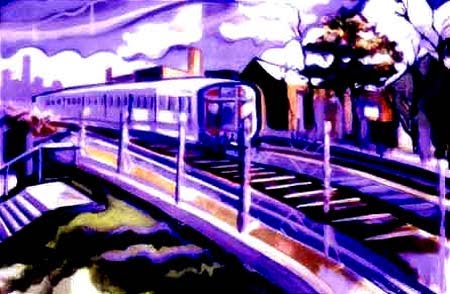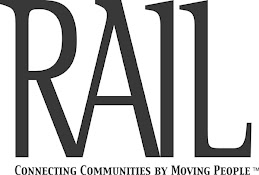Over the last few years, Washington, D.C. has advanced plans for a fairly
comprehensive streetcar network to augment the region's over-burdened and under-funded Metro system. Construction is now underway on two different lines:
one in Southeast D.C. in the Anacostia neighborhood, and another in Northeast D.C. on
H Street and Benning Avenue. Three
streetcars manufactured in the Czech Republic have already been delivered to the region in anticipation of the forthcoming service.
However, the historical streetcar network in Washington –
which was dismantled in 1962 – always operated under a unique traction structure: the absence of overhead wires. Because of the rigid urban design rules instituted by Congress in 1889 to protect the beauty of the nation's capital from rampant electrification at the time, DC's streetcars were forced to develop an alternative arrangement to the traditional overhead trolley wires used elsewhere to power the vehicles. That set-up turned out to be a
slot in between the rails that contained electric wiring the streetcars would access by a pole underneath the car, presenting a similar visual look to
San Francisco's iconic cable cars.
This arrangement worked fine when there were many manufacturers in the United States who built streetcars, and opportunities for customization were prevalent. However, as streetcars fell out of favor across the country, the streetcar manufacturing industry evaporated. The remaining cities that continued to operate the mode – such as
Boston,
New Orleans and
Philadelphia – relied on holdover vehicles, such as
PCC cars. And while communities in Europe and Asia continued to operate, and even expand, their streetcar networks, no similar civic codes required the use of underground streetcar wires. Even modern streetcar operations in
Portland,
Tacoma,
Little Rock and
Tampa required no such traction abnormalities.
And yet, the
National Capital Planning Commission – the quasi-governmental body charged with maintaining the urban form of the capital city –
seems intent on enforcing the 1889 code, at least in the so-called "f
ederal city" designed by Pierre L'Enfant. That would prohibit the use of overhead-powered streetcars on the H Street and Benning Avenue line, although not on the Anacostia route. The Czech-built streetcars were constructed to use overhead power and cannot be retrofitted. Procuring and maintaining a streetcar fleet using different modes of traction would likely be costly and inefficient.
Thus, DC seems positioned for two options: convince the Planning Commission to approve waivers for overhead wires, or locate a manufacturer willing and able to produce a streetcar not powered by overhead traction, possibly such as a hybrid vehicle that could connect to overhead wires outside the federal city. Last month, the Department of Transportation
approved investment to allow Oregon's United Streetcar to construct a prototype of such a vehicle.
Meanwhile, some architectural and preservation observers argue that overhead wires
would not present a substantial enough aesthetic detriment to the capital city's sightlines to outweigh their mobility benefits, and also
revitalize neighborhoods and historic districts. Additionally, many cities artfully weave streetcar wires into their urban fabric, enhancing – not damaging – the beauty of their streetscapes. Examples can be found
here,
here and
here.







